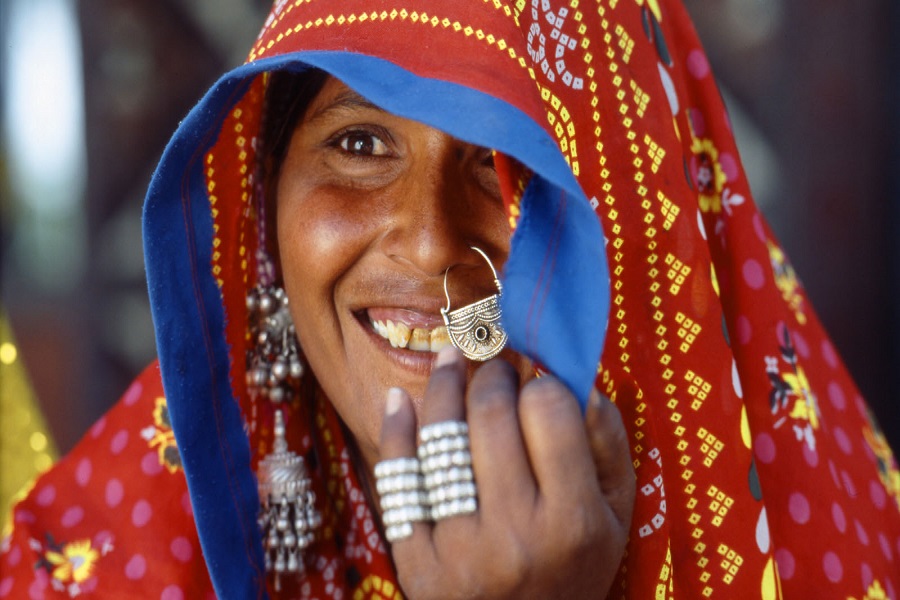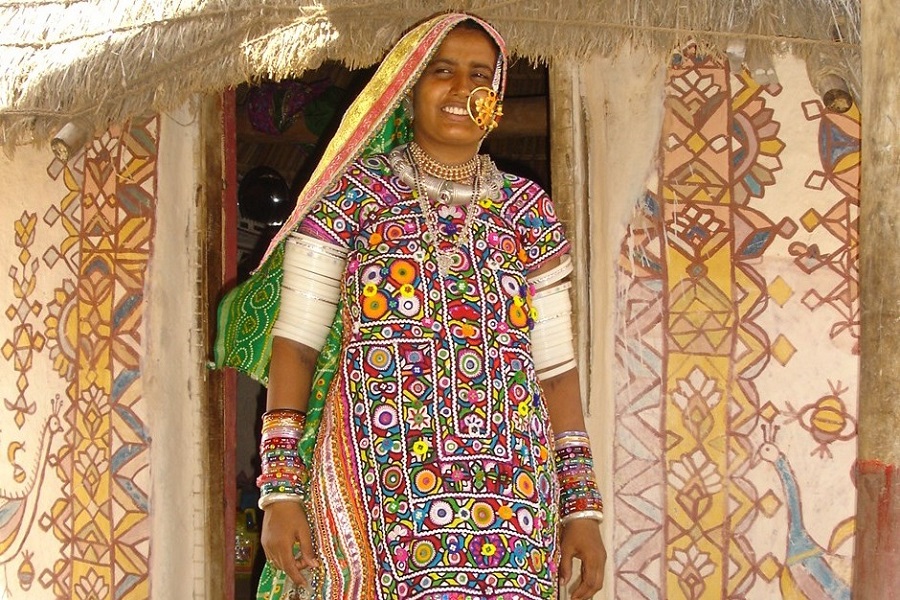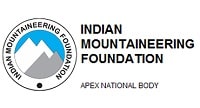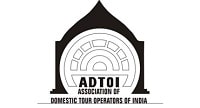Gujarat Textile Tribal and Safari Tour itinerary
DAY 01: ARRIVE AHMEDABAD
Met upon arrival at Ahmedabad Airport. Shikhar Travel Representative will transfer you to the hotel to check in. Later visit Miniature Collection Gallery. Evening free at leisure at Kankariya Lake. Dinner and overnight stay.
Meal Plan: Lunch + Dinner.
DAY 02: AHMEDABAD
Today after breakfast we will take you for a guided tour of the Ahmedabad City. Begin with a visit of Studio to see Kamal Kari Work & Sabarmati Ashram/Gandhi Ashram, Return for an early Lunch Afternoon visit Akshardham Temple at Gandhinagar- Enjoy watching the Mystic India show. Evening enjoy the Laserium Show(Sat Chit Anand Show). Return to hotel for Dinner and overnight stay.
Meal Plan: Breakfast + Lunch + Dinner.
DAY 03: AHMEDABAD - MODHERA - PATAN - DASADA
Morning post breakfast drive to Patan. Visit Rani Ka Vav then visit Salvi Family to see and learn the Patola Weaving Work. Lunch. Continue our drive to Modhera to see Sun Temple. Later proceed to Dasada. Check in Dinner and overnight stay.
Patan - Patola of Weaving Patan are famous for Patola weaving. Salvi community of people is working with Patola. The queen of textiles is the Patola woven by only few families of Patan. The technique used to weave the Patola is the rare double ikkat style which involves dyeing both the wrap threads in the pattern of the final fabrics before setting them on the loom. Patan is also one of the centers for Mushroo, fabrics woven as a combination of silk & cotton with the latter forming the backing. While in Preparing Patola coloring and design patterns are evolved on each thread. Different color and pattern are matched exactly on horizontal and vertical threads in weaving. The Patola was traditionally woven in a sari length of 5 to 9 yards by 45" to 54" width. The range now extends to include tablecloth borders scarves, handkerchiefs.
Rani Ki Vav (Step Well – Architecture) It was built by the queen Udaymati, the wife of Bhimdev. It is the best example of such architecture for water wells that is peculiar to Gujarat. There are wonderful carved images in the niches of the walls of this multi storied step well. It was one of the largest and the most sumptuous structures of its type. It became silted up and much of it is not visible now, except for some rows of sculptured panels in the circular part of the well. Among its ruins one pillar still stands which is the proof not only of the elegance of its design, but also an excellent example of this period. A part only of the west well is extant from which it appears that the wall had been built of brick and faced with stone.
Modhera Sun Templeis the finest example of Hindu architecture in Gujarat. The Sun Temple at Modhera dates back to early 11th century CE and was built by King Bhimdev I in 1026 CE. The sanctum was to allow the sunlight to illuminate the main statue, no longer designed in the temple. The quality & quantity of carvings along its walls describing god, other figures & erotic positions are exceptional. In front of the temple is a colossal tank, which was once known as Surya Kund or Rama Kund. The tank has a series of carved steps leading to the bottom. Several miniature shrines adorn the steps of the tank - which is an art gallery in itself
Bhuj is a beautiful little town in Kutch district, Gujarat. It was founded in the year 1510 by a local ruler, called Maharao Hamir. The place was laid siege and take control of by Rao Krengarji I, another ruler who made the town the capital of his kingdom in the year 1549. Bhuj has got its name from the fortress called Bhuia that overlooks the city from this nearby hill. On 21 July 1956 as well on 26 January 2001, the city was struck by a major earthquake which caused a great deal of damage and loss of life and property. Many parts of Bhuj were demolished due to the extensive damage whilst others were repaired. There has been a great deal of progress in the city since the 2001 earthquake, with considerable improvements to roads, transport and infrastructure.
Meal Plan: Breakfast + Lunch + Dinner.
DAY 04: DASADA - BAJANA - DASADA
Early morning go for a Jeep Safari of Little Rann of Kutch to see Wild Ass and many migratory birds. After Lunch. We will take you for a half day Tribal Village Tour. Explore the region to see Embroidery Work and Mirror Work. Dinner and overnight stay.
Meal Plan: Breakfast + Lunch + Dinner.
DAY 05: DASADA - DHAMADKA - DHANETI - BHUJ
Today after an early breakfast check out from your resort and department for Bhuj. Enroute at Dhamadka we will participate in a Work Shop on Block Printing. At Dhaneti – a Work shop will be arranged on Ahir Embroidery. Later proceed to Bhuj. On arrival at Bhuj check in at your resort. Dinner and overnight stay.
Meal Plan: Breakfast + Lunch + Dinner.
DAY 06: BHUJ - BHUJODI - BHUJ
Post Breakfast visit Artisan doing Tie and Die work followed by a Work Shop at their residence. Afternoon visit Bhujodi Village to see different textile techniques, including Shawl weaving, visit Artisan and workshop of weaving. Later interaction with the Rabari community artisan – see their embroidery work. Return to hotel. Dinner and overnight stay.
Bhujodi :-Bhuj and the surrounding region is famous for its handicrafts. A village called Bhujedi is especially famous for this, a sort of model village where outsiders can visit and see the artisans at work. A crafts village is located there where artisans can come and display their arts, creating an avenue for them to sell it directly to customers. The handicrafts include embroidery, metal work, paintings, leatherwork etc, beautiful and available at throwaway prices.
Meal Plan: Breakfast + Lunch + Dinner.
DAY 07: BHUJ - ONWARD DESTINATION
Morning after an early breakfast check out from the hotel and transfer to Bhuj Airport to take the flight for onward destination.
Meal Plan: Breakfast.
More Related Tour :- Gujarat Textile Tour Package
Tour Highlight
Focus on experiencing the Rural Community
Temple Tour
Jeep Safari
Village Interaction
Work Shops & Participation in Craftswork
Tie and Die Work
Weaving & Embroidery
Price on request.


















